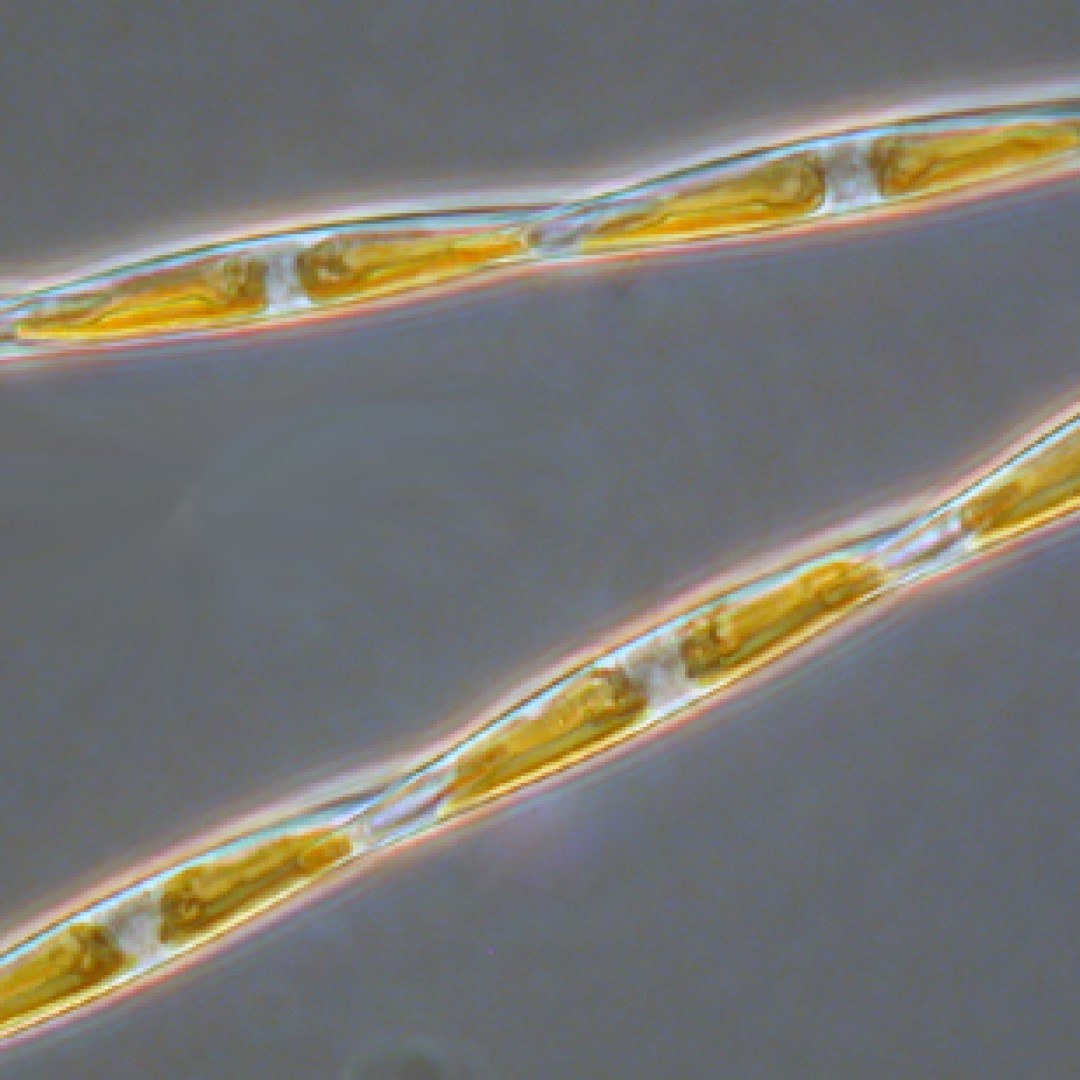
Researchers discovered unique ways diatoms metabolize nitrogen, enabling them to thrive in dynamic environments
On Oct. 7, 2019, researchers from J. Craig Venter Institute (JCVI), Scripps Institution of Oceanography, and the University of California, San Diego (UCSD) reported they had uncovered the genetic basis for the production of domoic acid, a potent neurotoxin produced by harmful algal blooms.
Harmful algal blooms cause significant economic and environmental damage to coastal communities around the world. These blooms occasionally produce toxins that can sicken marine mammals and can threaten human health when the toxins accumulate in seafood. A high-dose exposure to domoic acid, produced by a type of phytoplankton known as diatoms in the genus Pseudo-nitzschia, can lead to amnesic shellfish poisoning, a potentially fatal condition characterized by seizures and short-term memory loss.
In a study that appears in Science, the team of scientists identified a cluster of genes associated with production of the toxin domoic acid in the marine phytoplankton Pseudo-nitzschia.
This type of microalgae is noteworthy because in the summer of 2015 it caused the largest harmful algal bloom ever recorded off the West Coast of North America, from Alaska to Santa Barbara, and resulted in the closure of fisheries and crabbing seasons to protect consumers from potential shellfish poisoning.
Despite decades of research, the molecular basis for the toxicity of these phytoplankton was not known. Scientists found that these newly discovered genes contain the biological instructions for how they make the toxin and are subsequently “turned on” when Pseudo-nitzschia is producing domoic acid.
By showing how the genes for domoic acid production are turned on in culture, the authors suggest a way to connect the oceanic conditions that drive algal bloom evolution to the development of toxin production.
Researchers who study the monitoring and forecasting of harmful algal blooms say this finding offers hope for increased understanding of the phenomenon and can help better project the trajectory of domoic acid events in response to future climate change.
Tags:
Source: Scripps Institution of Oceanography
Credit:
